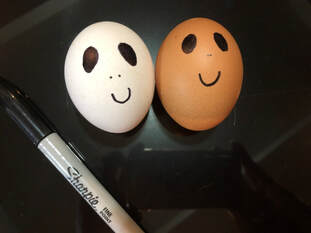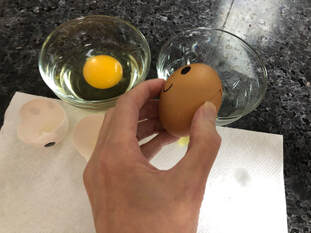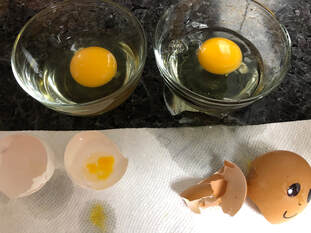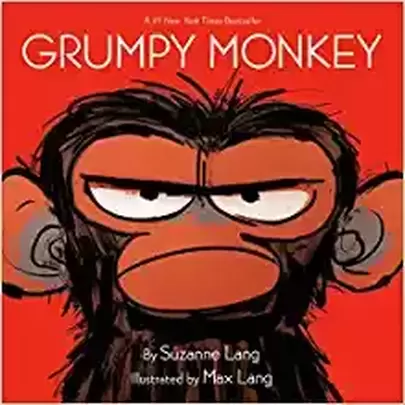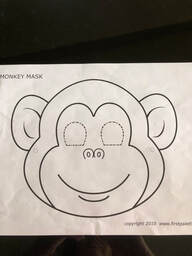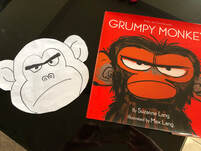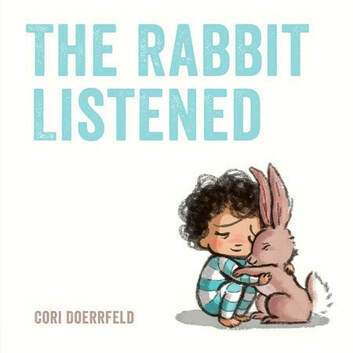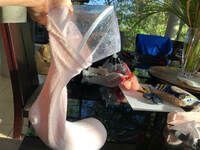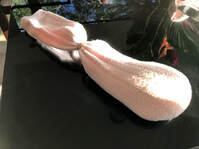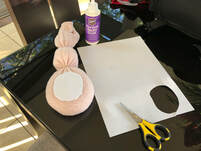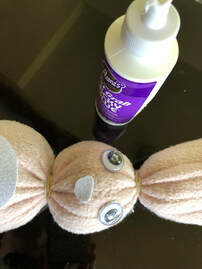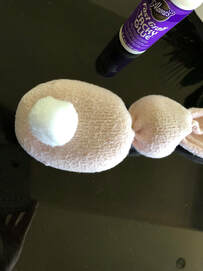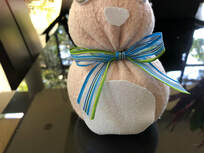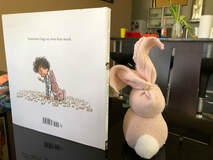A Book Review of The Invisible Boy
The Invisible Boy is a book I treasure as it is one after my own heart. I was one of those quiet children and I would venture to guess, the author, Trudy Ludwig, was one or knew one intimately. She shows incredible insight into the realities of an introverted child throughout this book. I truly appreciate this perspective as there are few people who recognize the inner workings of the quiet child. The majority of books on the subject focus on changing the quiet child to become more outgoing. This reflects the presumption in our society that being quiet is somehow less desirable than being outgoing. This book takes a refreshing spin and celebrates Brian for who he really is and not who society wants him to be. As important as it is for us to accept and celebrate cultural differences, it is equally important to accept and celebrate personality differences. The needs of quiet kids often get overlooked as they do not bring attention to themselves. They may not want to be the center of attention, but they still want to feel included. They may not want public recognition, but they still want to be recognized. They may not be the life of the party, but they want to be invited. We all can't be actors on the stage. Without the people in the background making the props, working the lights or making the costumes, the show will not go on. The struggles Brian encounters throughout the book are typical classroom situations that are often dreaded moments for the quiet child. For example, -Being told to team up with a partner for a project, -Classmates picking teams for sports -Others talking about things in which the quiet child wasn't included -Lunchtime Each one of these common classroom situations remind quiet kids of their standing in the classroom-INVISIBLE. Brian's experience to these awkward moments is described insightfully in the book as follows: "Brian looks at the floor, wishing he could draw a hole right there to swallow him up." I am certain that is a statement in which most quiet kids can relate! Wouldn't it be nice to provide a classroom environment where quiet kids didn't have to feel that way throughout the day? Brian's unique strengths are portrayed in the book. Similar to many quiet kids, Brian is sensitive to the feelings of others, and observes and notices many things that his louder peers may not. Brian's life in the classroom improves when he overhears the new boy in class, Justin, being teased and writes a special note to him. This is Brian's unique way of showing kindness in a quiet way that others may not notice. However, it only takes the kindness of one person to lead others to be kind. After receiving the note, Justin is then kind to Brian and includes him with another friend. After seeing Justin being kind to Brian, the other friend includes Brian too. And this kindness chain will spread to others. By the end of the story, Brian is recognized for his artistic talent in a small group situation, which makes him feel special and included. One of my favorite features in this book, is the creativity of the illustrator, Patrice Barton. The illustrations are large and colorful and grab the reader's attention. Brian's artistic talents are clearly displayed with many interesting and fun children's drawing. The special gem in this book is that Brian is in black and white at the beginning of the story, and the rest of the illustrations are in color. As the book progresses, and Brian starts to feel more included and comfortable, more color is added to his character. By the end of the story, Brian is drawn in full color. This is such a clever visual detail that adds much intensity to the story. Let's not forget, the quiet kids need oil too. Make an effort to notice them and accentuate their strengths. The world will be better, and more colorful, for it. To purchase this book, and check out others by this author, click HERE. An Activity Idea for The Invisible Boy Materials Needed: -Paper -Pencil -Crayons -Envelope Directions:
Ask the child if there was a time they felt invisible like Brian. If so, have the child draw a picture of what happened and discuss how that felt when it happened. Discuss their personality and Brian's personality. How are they the same? How are they different? Have the child think of someone at school, in their neighborhood or family, that may feel invisible. Or someone they witnessed being teased or bullied. List some ideas they can do to make them feel included and valued. Using Brian's idea in the book, have the child write a note to this person they are thinking of. What can they say to make this child feel included or special? Have the child draw a picture on the note to show the child that they are noticed. Then ask, How do you think the child will feel when they get your note? How will you feel about giving them the note?
2 Comments
A Book Review of Something Happened in Our Town- A Child's Story About Racial Injustice
The recent incidents of police brutality toward people of color, and the treatment they receive that is very different from their white counterparts, is currently shining a light on a social issue that has been, and continues to be, a crisis within our communities. The news of the protests and the uptick of conversations around racial issues are, in fact, affecting our kids. They are watching and they are listening. As adults, we want to shield our kids from the ugly realities of the world. White people have had the privilege of not discussing race with their kids. This is part of the problem that needs to change. Therefore, it is crucial to have these discussions and this book is a perfect starting point. One of the most important and effective things that we can do is to teach our children to pay attention to the world around them, to watch out for how others are treated and to stand up for themselves and others. Our children are our hope for a better future of equality for ALL people. We need to help them understand sameness and celebrate difference among people. This is our opportunity to check ourselves on how we are perpetrating the ongoing biases and disregard for people different from ourselves. We can learn along with our children. Starting as young as 3 years old, numerous children of color that I encountered in my practice, verbalized to me that they thought they were ugly because of the color of their skin. There were also those who said they wanted to be white because that was better. Our society is teaching our precious children these falsehoods and it is our responsibility to make it stop! This post may seem that it is directed more toward white children, but it is directed to all children. White children, however, have the most to learn about this issue due to a long history of disregard and discrimination of people of color perpetrated from their white heritage. White children are crucial in using their privilege to change the future. It is never too early to start talking about race. It is important to make this an ongoing conversation and to point out injustices that you or they may witness. Expose your children to people of color through real life activities, literature, music, etc. Something Happened in Our Town was written in 2018, but was relevant long ago and, unfortunately, continues to be relevant to the experiences of today. It was written for children ages 4-8, however, I believe it is a learning tool for those from ages 4-99. Something Happened in Our Town offers a brief history of slavery and segregation, describes exactly who white and black people are, brings police brutality and racial inequality into light and encourages children to stand up for others and be allies. That is a lot for one children's book to cover, but it addresses these topics beautifully and with compassion. The authors skillfully pull in the perspectives of a white and a black family, which makes the book relevant for all children and helps us see the perspective of the "other." After all, that is a big piece we are lacking as a society. The authors do not shy away from the big issues, but address them in an age appropriate, direct matter. The illustrations reflect the intensity of the subject matter and include powerful silhouettes that have a strong emotional impact throughout the book. Anger surrounding racial issues is addressed in the story and the character explains how it can be used as momentum to improve the world. The conclusion pulls together what the children have learned through the conversations with their families. The two children, white and black, are in school when an immigrant boy arrives as a new student to their class. They notice how other students are mistreating the new student, and stand up for him. A lesson we all need to learn and develop the courage to uphold. Those children were the start of a better pattern in their school, which can carry over to the larger community over time. The authors have provided a note to parents and caregivers at the end of the book with resources to help us continue to have these conversation with our children. Below I have activity and discussion ideas to take this conversation to a deeper level. Activity and Discussion Ideas for Something Happened in Our Town- A Child's Story About Racial InjusticeMy first suggestion is to provide many books to children that include different races of people. Provide a variety that discuss the life hardships of people of color, as well as those that have a main character of a different race, feeling and experiencing the same day-to-day things as they do. The idea being understanding sameness and celebrating difference. In the activity below, I have included many ideas for discussion. This is a difficult subject to discuss with children and these are just some ways to approach this sensitive topic. Materials Needed 1 brown egg 1 white egg black marker 2 small bowls paper towel
Do you think that people with different colored skin should be treated differently? Why? Why not?
So, our job, because we know that people are the same on the inside, is to stand up for those people who may be treated unfairly just because of the color of their skin. Discuss how the kids in the book did this with the new student. Then, go deeper with the discussion. Why are people different colors? People are different colors depending on where in the world they, or their ancestors, were born. Discuss where the child's ancestors were born and relate it to the color of their skin. Explain that most white people's ancestors are from Europe or other countries where the people are mostly white. Black people's ancestors are usually from Africa, Haiti, or the Caribbean. There are also people of other colors that come from different places in the world too. (A globe or world map can be helpful with this discussion.) But now, since their ancestors came to this country, many people of different colors are born in America, just like you(if that is true for them.) Now, let's go even deeper. Should we pretend we don't notice that their skin is a different color? No, we should celebrate all of our differences. Your skin color depends on where your ancestors are from. For that reason, skin color does make us different in ways that we can celebrate and enjoy about each other. The fact that most of our ancestors are from different countries can bring with it different traditions like, food, music, art, rituals, religions that different families enjoy about their heritage. We wouldn't have the privilege to enjoy going to Chinese, Mexican, Indian, Moroccan, Ethiopian, or many other kinds of restaurants if people didn't bring these recipes from their native countries. What are some things that our/your family eat or does that have come from where you or your ancestors were born? Ancestors also bring with them their history of experiences that can make life harder for them and the generations that come after them. One example of this is slavery, like we read about in the book. Many people with black skin had ancestors that were brought to the United States from Africa as slaves. They were treated very poorly by the people who were already here from Europe. Slavery finally ended, but black people still haven't caught up to having the same opportunities or being treated as well as white people. These discussions don't have to be done all at once. This is the type of discussion that needs to be done repeatedly throughout the life of a child/adolescent/young adult. Children as young as 3 years old are aware of differences of skin color. Nurturing an understanding of others, empathy, and a sense of justice in our children will go a long way in helping to make the world a better place for ALL people. A Book Review of Grumpy Monkey
-with constant togetherness, major changes in routine, boredom, fewer emotional and social outlets, worry about the future, money issues, etc., I would venture to guess that grumpy monkey business is now at an all-time high! In other words, it is likely that we are all going bananas! For that reason, I have decided to review the Grumpy Monkey book this month for all of you "grumpy monkeys" out there (well, and here too!) Grumpy Monkey is a New York Times bestselling picture book that addresses that vague, all-the-big-feelings-at-once mood of GRUMPINESS. Jim Panzee had a day where nothing felt quite right. His jungle friends noticed his grumpiness, but Jim was in denial and insisted repeatedly, "I am not grumpy!" They pointed out his body language that showed otherwise. Marabou said, "You're all hunched," so Jim straightened his body. Lemur noticed that Jim's eyebrows were all bunched up and snake noticed a frown on Jim's face. Jim changed his body language, but the jungle friends knew that he was pretending. Even though he was trying not to look grumpy on the outside, Jim still felt grumpy on the inside. However, Jim still insisted that he was NOT grumpy. Sound familiar? Many times we don't notice ourselves feeling or acting grumpy. Children, as well as adults, tend to deny being grumpy when its pointed out. But grumpiness not only affects ourselves, but those around us, and sometimes it's even catchy! Grumpiness is often so many feelings lumped together into one that it is difficult to recognize in ourselves and even more difficult to pinpoint the cause. The animals couldn't understand why Jim was grumpy because it was such a beautiful day. The jungle friends tried to cheer him up, suggesting a mountain of ideas, but Jim didn't feel like doing anything. All of their suggestions were things that made his friends feel happy, but not Jim, especially not on this day. The efforts of his friends became increasingly annoying and Jim reached his limit. Finally, his mood escalated further and he went BANANAS, screamed at the top of his lungs, "I AM NOT GRUMPY!" and stormed off. After feeling bad for yelling at his friends and noticing that his friend, Norman, had become grumpy too, Jim finally accepted that he was grumpy. Accepting that feeling for himself, and his friends acknowledging his feeling, when he was ready, was all he really needed to start to feel a little better. In this book, Suzanne Lang promotes social-emotional learning by showing children the importance of reading other's body language. Another important emotional lesson is that sometimes cheering up is not what we need. Sometimes, we just need to feel grumpy and for that to be okay. Accepting your own and acknowledging other's feelings, when they are ready, can go a long way in being able to sit with your feelings and start to feel better. The illustrator, Max Lang, does a beautiful job portraying the distinct facial expressions and body language of Jim and his jungle friends. The illustrations are vivid and fun, adding to the enjoyment of the story. Suzanne and Max Lang have created a series of Grumpy Monkey books that are equally enjoyable. Check them out at https://www.penguinrandomhouse.com/authors/222967/suzanne-lang. Below I have an activity suggestion to go along with the book! Activity Idea for Grumpy MonkeyWe are going to make a Grumpy Monkey mask, so your child can hold it up when he/she is feeling grumpy and doesn't want to be bothered. They may even lend it to you, or other members of the family, when they notice you are having a grumpy day. Maybe it will help lighten the mood! Materials Needed: -printed copy of monkey face from this link https://www.firstpalette.com/pdf/monkeymask.pdf -black marker -scissors -crayons -glue -tape -paper plate -craft stick or straw
A Book Review of The Rabbit Listened
Having a friend just sitting beside you through a tough time can be incredibly comforting and therapeutic. When the person chooses to talk, being with them is being there to listen. Just listen. When a friend or loved one is hurting, we have a tendency to want to fix it. We want them to be happy. We can't tolerate seeing them in pain. But sometimes in life, we just need to sit with our feelings for awhile. It can be deeply comforting to have someone you care about joining you in sitting with your feelings. This helps you not feel so alone. In her recent Children's book, The Rabbit Listened, Cori Doerrfeld describes the concept of "being with" beautifully. She presents the concept at a level very relatable to young children. This book is simple, yet powerful. While it is geared toward children ages 3- 7, we can all learn a great deal from this book. The story starts out with Taylor, a young girl, building a very special tower out of blocks that elicits much pride. Out of nowhere, a flock of birds fly by and knock down her prized castle. Her creation is ruined. Ugh. The dreaded experience that evokes big feelings familiar to all children. Ms. Doerrfeld does an amazing job illustrating Taylor's strong feelings. As expected, a parade of well-meaning friends come and want to help Taylor. Chicken tries to make her talk, Bear tries to get her to growl and shout and elephant tries to help her rebuild. Taylor is not interested in any of this. Many other friends come by to try and make it better for Taylor. Nothing works. Until finally and quietly... Rabbit slowly comes up and sits very close to Taylor so she can feel his warm body. The Rabbit sits in silence by her side. He listens when she feels like talking, or shouting, and listens closely to all of her ideas. After Taylor goes through the process of working through her feelings at her own pace, she decides to rebuild. At that point, Rabbit is still by her side sharing her joy of being ready to rebuild. The Rabbit Listened is helpful to ALL children(parents, therapists and teachers too!) This book is a frequent go-to in my practice with children who have difficulty regulating their emotions. It provides insight to these children as to what they may need to calm themselves. The book also provides insight to their caregivers as to how to manage their child's big feelings. Additionally, I utilize this book for kids that have recently gone through big struggles in their life, whether it be a death or a separation in the family. In addition to gaining personal insight, this story teaches children how to be a good friend and to help others who may be struggling. The Rabbit Listened covers a universal topic that can remind us all that simply "being with" someone is the best gift you can give. After reading the book, why not create a Rabbit who will sit quietly and listen to you? Or that you can lend to your family members or friends when they are struggling? See below for instructions. Activity Idea for The Rabbit ListenedMaking a sock bunny together with the child and discussing how the bunny can sit beside him/her when he/she is having big feelings is a great therapeutic activity. They can also talk to the bunny about their big feelings. The bunny is simply there to sit and listen. The bunny can also be used for them to help other people and lend him out as a sitting buddy to a family member or friend who is struggling. To drive the concept home, I do role playing in therapy, having the child pretend they are sad, mad, or scared and setting the bunny quietly next to them. As the therapist, I pretend to have big feelings and the child then places the bunny next to me. We then discuss how it feels to have someone next to you, sharing your big feelings and listening. We also discuss situations that have occurred in their life when it would have been helpful to have someone sit by their side quietly. We discuss situations their family or friends may have experienced that they think would have been helpful to sit quietly by their side and how this might make them feel. Materials needed An adult-sized sock 2 cups of rice measuring cup with spout 2 large sturdy rubber bands felt or foam sheet large pompom googly eyes ribbon tacky craft glue sharp scissors
|
Follow me on Twitter, Pinterest and LinkedIn
Categories
All
|
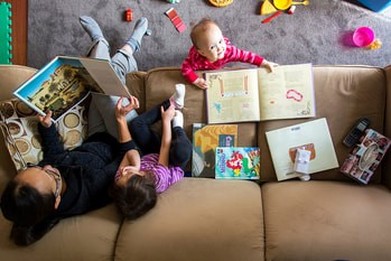
 RSS Feed
RSS Feed


